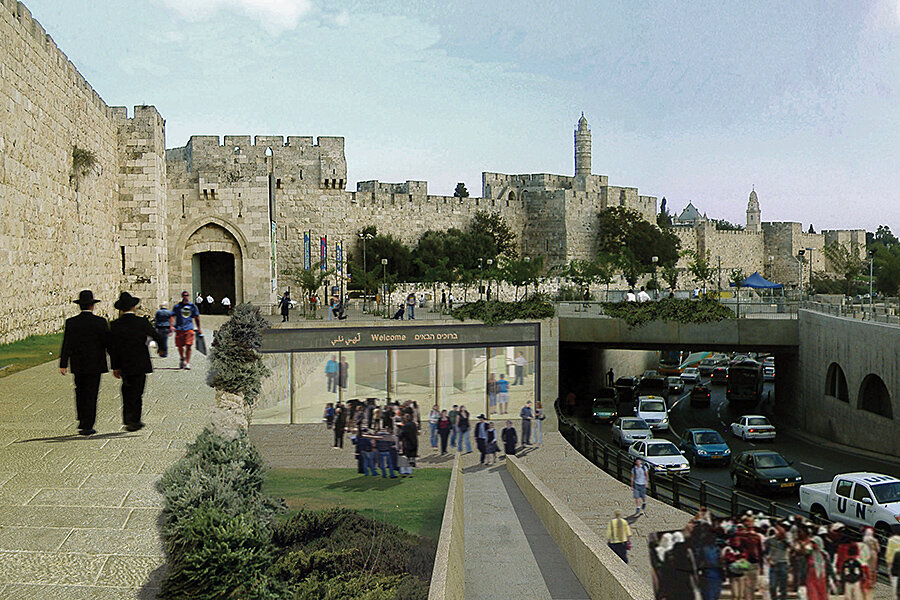Building a shared Jerusalem: One design firm takes up the task
Loading...
| Tel Aviv
Negotiators talk about it. Military experts calculate the risks. Peaceniks dream of the benefits. But in all the discussions about peace between Israelis and Palestinians, few have ever asked what this would actually look like at street level.
So in 2003, a decade after the initial Oslo Accord was signed, architecture students Karen Lee Bar-Sinai, Yehuda Greenfield-Gilat, and Aya Shapira designed a bus terminal that would sit on the seam of divided Jerusalem under an eventual peace deal.
The Jerusalem city engineer, intrigued, came to one of their reviews. He was not impressed. “He stood there in front of everyone and said, ‘You will never graduate. This is not architecture,’ ” Ms. Bar-Sinai recalls.
Not only did they graduate, she and Mr. Greenfield-Gilat started a firm – SAYA, or Studio Aya (after their classmate, killed in the Indonesia tsunami) – churning out designs that have become highly sought after.
US Ambassador Martin Indyk asked to see their plans, which have also been shared with top Israeli leaders – including some on the right. Former Israeli Prime Minister Ehud Olmert even showed one design of a pedestrian crossing between the two halves of the city to his counterpart, Palestinian Authority President Mahmoud Abbas.
While the pair see a divided city as more practical than an open one, at least at first, their designs incorporate an optimistic flexibility for progress. If border-crossing facilities became unnecessary down the line, for example, they could be turned into community centers.
After 10 years, Bar-Sinai, Greenfield-Gilat, and their team have produced detailed renderings of nearly every key challenge involved in dividing Jerusalem between Israel and the future Palestine.
They sketched out a natural barrier along the seam of the divided city, enhanced with electronic sensors and cameras and nicely landscaped – far more visually appealing than the concrete and barbed wire more common to Israel’s security infrastructure. They redesigned highway interchanges to create separate road networks between Jewish and Arab neighborhoods.
They even created an interactive online map for the S. Daniel Abraham Center for Middle East Peace in Washington, where users can examine the patchwork of Jerusalem neighborhoods and experiment with drawing their own borders for the city.
Their proposals strive to create minimal disruption to the city’s fabric while ensuring high security. But their mission goes beyond design, to helping others reimagine a peaceful Jerusalem.
“It’s a philosophy,” says Greenfield-Gilat. “We’re involved in a whole sphere of activity that chose not to see this situation as unsolvable but ... as something we can overcome.”






